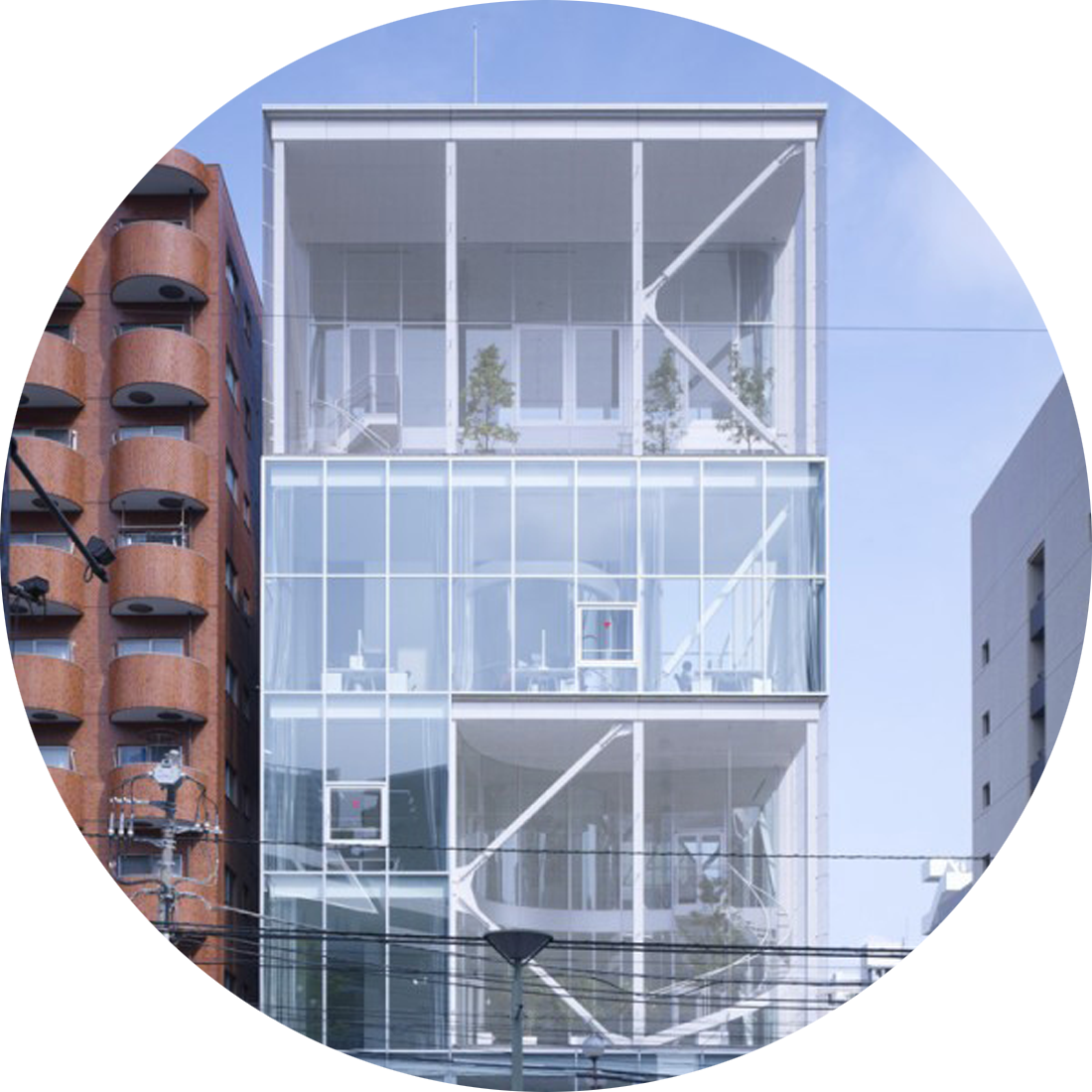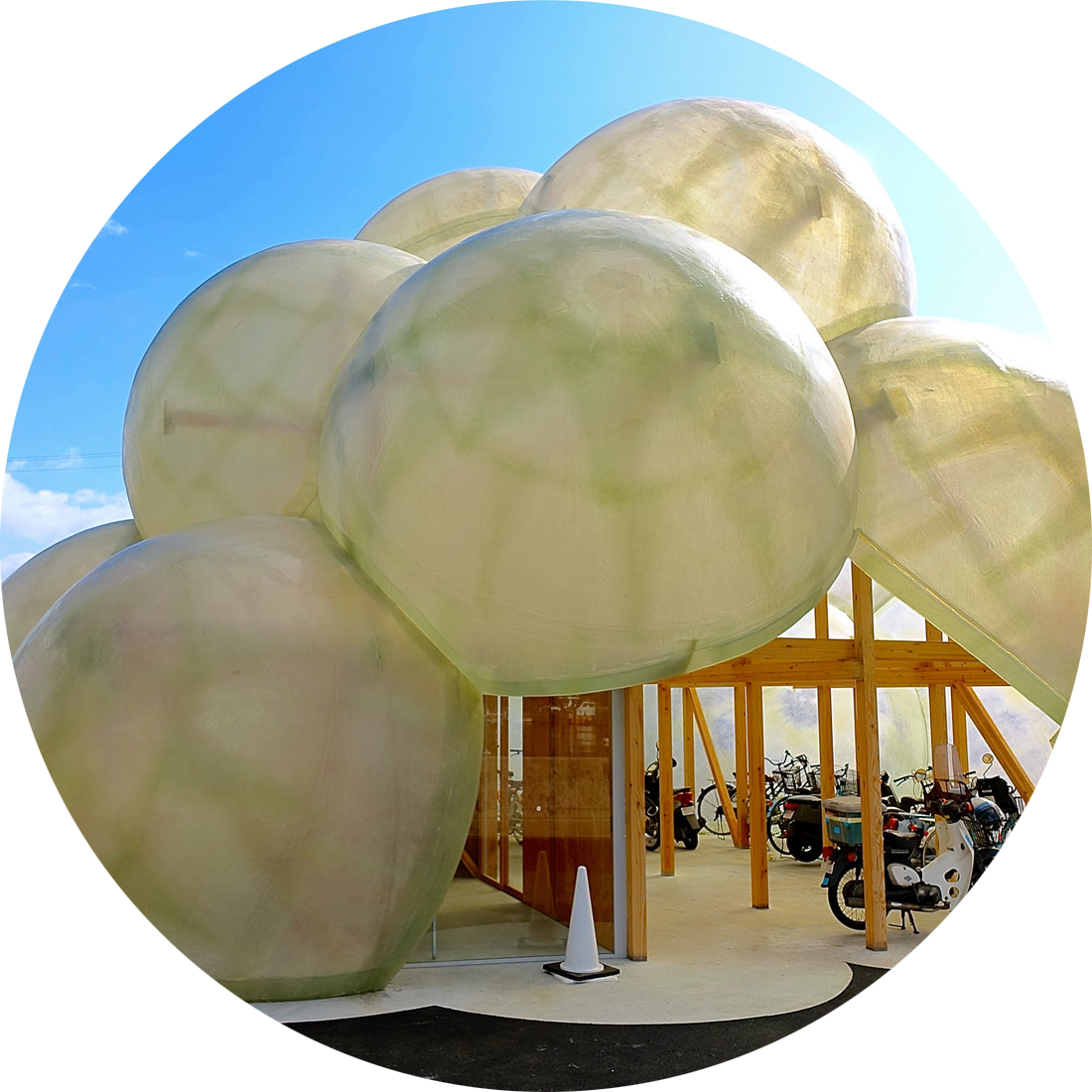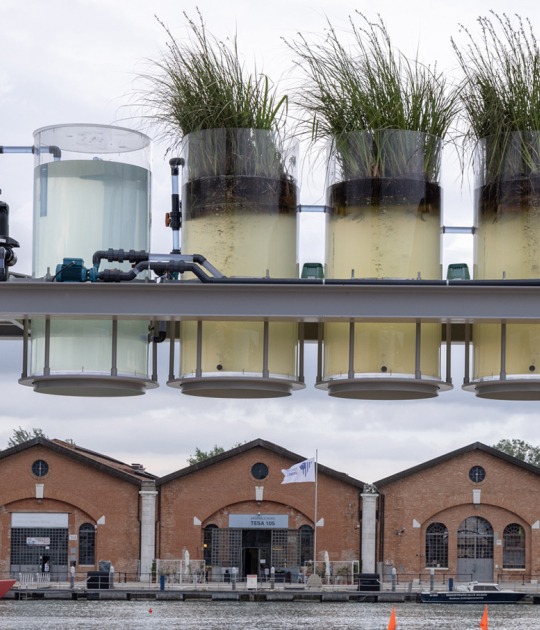Kensington Gardens, London, United Kingdom.
The 2009 Serpentine Gallery Pavilion was located in Kensington Gardens, UK. In 2009, the Serpentine Gallery invited the internationally known SANAA studio, which had never built anything in the UK before, to design a temporary pavilion for public activities in the UK between June and October of that year.
The pavilion is composed of a very thin corrugated aluminium roof, which rests on a system of columns of a very small diameter, also made of aluminium, in this way a series of connected spaces is provided that in addition the park is reflected in the aluminium which creates a continuity between pavilion and environment.
Grace Farms, New Canaan, USA.
The River is a winding building, as its name indicates: it has the shape of "River", is located in Grace Farms, New Canaan in the United States and was designed by the studio SANAA. This building, like most SANAA projects, aims to blend in with the surroundings without drawing attention to the architecture.
This building houses different functions thanks to a series of interior and exterior spaces lower that large sinuous roof. This occupies 32 hectares by the rural area of New Canaan and has an organic shape, the roof supported by fine pillars for the outdoor area and for the interior, glazed areas.
3 Chome-15-4 Shibaura, Minato City, Tokyo 108-0023, Japan.
Shibaura House is located in the Shibaura district, an area in which office buildings are very numerous. SANAA studio located this building on a corner plot, this building is designed to unite office programs (business area) and cultural center, offering flexible spaces to develop parallel activities such as workshops, artistic and leisure activities.
This building offers 1,000 sqm divided into 7 floors, from the first mezzanine there is access to a patio that has a staircase that connects with the upper floors, being serpenteante is creating a visual tour throughout the building. As for the structure, there is a concrete inner core dedicated to elevators, and on the perimeter you can see a metal network of pillars, The facade is a glass curtain wall.
4. The New Tsuruoka Cultural Hall
11-61 Babacho, Tsuruoka, Yamagata 997-0035, Japan.
The Cultural Center is located in the city of Tsuruoka in Japan designed by the Japanese studio SANAA. The studio sought to enhance local cultural and artistic activities through a multi-purpose room. The building is in harmony with the adjacent historic building and the landscape.
The exterior of the building is a set of several decks of a small size. Each deck becomes lower the closer it is to the perimeter until it reaches a height of a one-storey building, thus controlling its volume.
2 Chome-7-2 Kamezawa, Sumida City, Tokyo 130-0014, Japan.
The Sumida Kokusai Museum is located in a small park in the homonymous district of the Japanese capital, Tokyo. This building designed by SANAA harmonizes perfectly in terms of the urban aspect in the district and adapts to the scale of the environment.
The SANAA’s programme for the museum is strategically organized in this volume, ranging from fixed exhibition spaces to a library or shop. The material used for its coating is polished aluminium. The characteristics of this material allow the urban landscape that surrounds it to be reflected in it.
99 Rue Paul Bert, 62300 Lens, France.
The Louvre Lens Museum is located in the city of Lens in the Pas de Calais region of northern France and was a work designed by the SANAA studio with the help of landscapers to create a relationship and dialogue between the museum and the surrounding landscape environment.
SANAA did not want to project a large dominant wall in the environment, but a low and easily accessible structure integrating into the environment. The museum is composed of five steel and glass buildings joined together. The facades are made of polished aluminium to reflect the park, creating a continuity between museum and park, and the roofs are made of glass for the entrance of light.
7. The Zollverein School of Management and Design
Gelsenkirchener Str. 209, 45309 Essen, Germany.
On the main access road to the former Zeche Zollverein mine in Essen, Germany is located the Zollverein School of Administration and Design which was designed by the architecture firm SANAA. This studio won a competition to build the new school in 2002.
The volume of this building is an almost perfect cube, it has 3 unique fixed cores of different sizes and 2 metal pillars that cross the slab. It is transparent and with lots of windows that make this building almost transparent. The program of the school is spread over the 4 floors that make up this building.
Vitra Campus, Weil am Rhein, Germany.
This project, the Factory Building designed by SANAA is located at Vitra Campus, Weil am Rhein in Germany. It is a building that has a rounded shape but not entirely circular. This way makes the logistics process easier, as the interior space is sufficient for the internal movement of trucks.
The most characteristic feature of this work is the lightness of its architecture, it eliminates everything that is not essential, the reduction to a point in which the architecture and the structure allow to see the program. The interior of the warehouse is divided into zones, the first the north zone, is a high-rise warehouse, another in the center, assembly area and finally the south zone, which is the collection warehouse.
9. 21st Century Museum of Contemporary Art
1 Chome-2-1 Hirosaka, Kanazawa, Ishikawa 920-8509, Japan.
The 21st Century Museum of Contemporary Art (21CM) is located in Kanazawa, on the west coast of Japan. The museum is located in the city centre which is surrounded by the City Hall and also the Kenrokuen Gardens. It was opened in 2004.
Its circular structure of 112.5 meters in diameter is one of the most important works of SANAA. Architects play with light and reflections very easily, creating abstract landscapes. The museum is a composition of boxes connected by a circular cover, this makes the circulation of the museum a unique experience.
Honmura, Naoshima Island, Japan.
The Port Terminal is a pavilion in Honmura, Naoshima Island in Japan designed by SANAA. It is a space that also serves to park the transport rented by visitors while visiting the Art House. The architects wanted it to be a meeting point of embarkation for those who visit the island for the first time.
It has a unique, three-dimensional shape 8 meters high, similar to a cloud. Its structure is made of wood and the spheres are semi-transparent FRP. This space is luminous thanks to the outer light that passes through the spheres.
Los Vilos, Chile.
"Los Vilos House" designed by the Japanese studio SANAA is located on the shores of the Pacific Ocean in Los Vilos, Chile. The configuration of this house agrees with the natural forms formed by the landscape.
In this project of SANAA, the most outstanding architectural element, and to which it is given more importance is the roof. The undulations of the same do not need to incorporate walls in the project, therefore different spaces are created dedicated to each area of the home. With respect to the materials, the concrete is used for the roof, which is supported by steel pillars and glass for the vertical enclosure.
12. Home-for-All in Tsukihama, Miyatojima
Tsukihama, Miyatojima, Japan.
In the Miyatojima Tsukihama district, which is a small town situated on difficult terrain, there is a small sandy beach very touristy for many Japanese. After the earthquake and tsunami that hit the east coast of Japan in 2011 it was wanted to recover all the beaches to attract visitors.
Thanks to the SANAA studio, which worked for free, a space was created, a place of rest open to the sea and that was multipurpose rest and work. This pavilion has a wavy roof that facilitated the integration with the entrno. This pavilion, Home-for-All, being a semi-outdoor space is ventilated in summer with southern winds, and in winter the northern winds are avoided thanks to its carpentry.

























































![Friedrich Kiesler, Endless House for Mary Sisler [shattered sketch sheet], New York and Florida, 1961, 21.5 x 33.4 cm, pencil on paper, mounted on cardboard. Courtesy by the Austrian Frederick and Lillian Kiesler Private Foundation, Vienna Friedrich Kiesler, Endless House for Mary Sisler [shattered sketch sheet], New York and Florida, 1961, 21.5 x 33.4 cm, pencil on paper, mounted on cardboard. Courtesy by the Austrian Frederick and Lillian Kiesler Private Foundation, Vienna](/sites/default/files/styles/mopis_home_news_category_slider_desktop/public/2025-05/metalocus_Fundacio%CC%81n-Frederick-Kiesler_03_p.jpg?h=3b4e7bc7&itok=kogQISVW)












